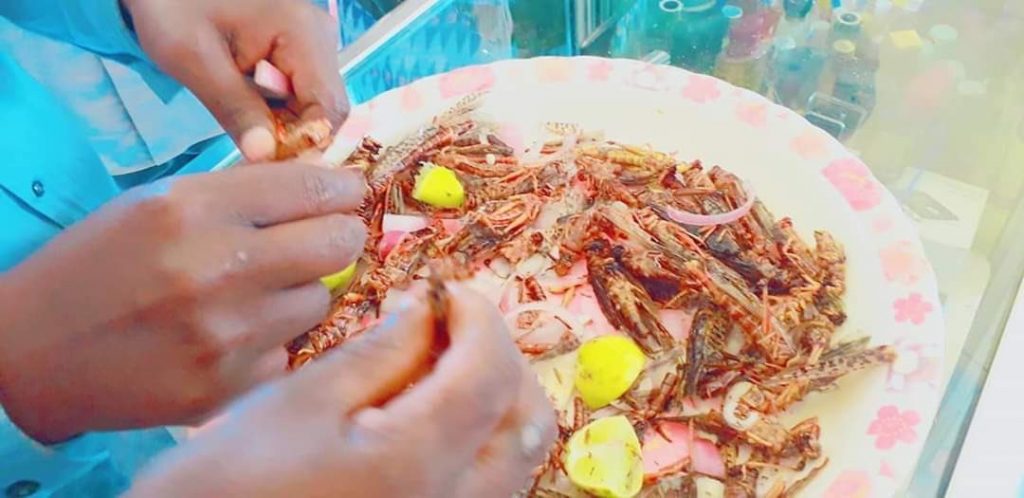“PANIC AS LOCUSTS RAID FOOD BASKET” was one of the headlines in The Daily Nation Newspaper on 14th January 2020 Locusts have invaded the country and it has become a headline for the past several days. Trust Kenyans to already have memes about the locusts, always trying to make light of whatever topic is trending. Swarms of locusts have been seen in different parts of the country, from Kirinyaga, Laikipia, Wajir, Garissa, Marsabit, Isiolo, Meru and even Samburu.
To get a bit of history about these insects, locusts have formed plagues since prehistory ancient times, Egyptians curved them on their tombs and the insects are even mentioned in religious books like the Bible and the Quran. Swarms have devastated crops and have been a very huge contribution to famines and human migration. It is not only in Kenya that locusts are being reported, but different parts of the world have also experienced swarms of locusts except for North America and Antarctica.
Locusts have for a long time been considered edible and a delicacy in some parts of the world. They are eaten in many Asian, African and Middle Eastern countries. That is not strange to me since growing up in the village in Kenya meant that we were running around catching them, though we sometimes captured them and played with them, there were those kids who took home to be cooked and they enjoyed them as an evening meal.

That got me wondering, what is making these locusts to start migrating into towns looking for food yet leaving destruction on their wake by feeding on farmers’ hard work? The most possible reason is that they are flying away from lack of food since their habitats have been encroached by humans. Forest cover continues to decrease not only in Kenya but around the world. As the human population grows rapidly with resources becoming less and less, wild animals seem to be escaping their natural habitats looking for food elsewhere, which means they enter our territory. Issues like deforestation, burning of forest land to create homes for people and climate change have caused wild animals to migrate towards human settlement.
As more animals leave the forest, they cause destruction to the survival of humans, locusts are even worse as they come in swarms that can devour large tracts of land in a single second. If unchecked the locusts will cause food shortage in the areas that they have attacked or will be attacking because farmers will lose their crops thus have less food to survive on.
According to a UN report, the United Nation has always encouraged people to eat insects, saying eating more insects could help fight world hunger. This could be a solution in the locust menace that has seen many people unable to handle the large swarms of locusts that have descended on their lands. As much as the locusts are causing a lot of harm to farmers, Kenya should devise a way of ‘harvesting’ the locust army to be used as food. This would be beneficial in areas like Mandera or Garissa which are prone to drought due to low or no rainfall at all. After all, locusts have been used as food all through history as they can be cooked in countless ways, often smoked, dried or fried served with an accompaniment or as a whole dish.
Our food preferences and palates have evolved over time and since they say that history repeats itself, it’s time we started looking at the locust invasion as food provided freely from above. Our great great grandparents ate locusts, our grandparents ate locusts, our parents ate locusts, and we, well, those born before the 2000s, ate locusts, now they are available for those who have not had that experience.
Eliminating hunger does not necessarily mean going to extreme lengths to find food, or finding complicated ways of solving food shortages, it might just be that we need to turn to edible insects that are already swarming in our territory… light at the end of the tunnel kind of thinking!


